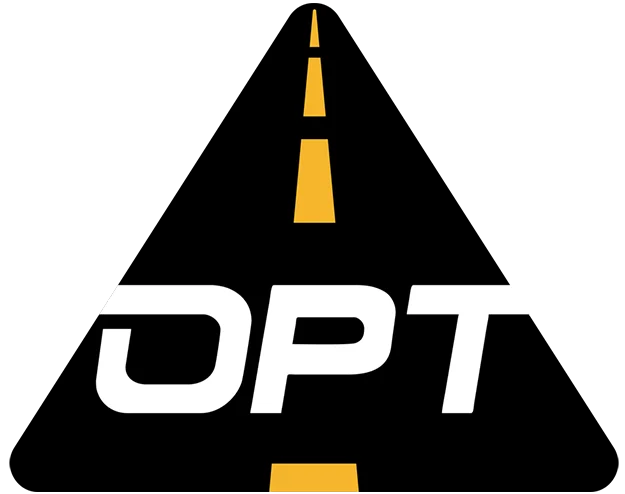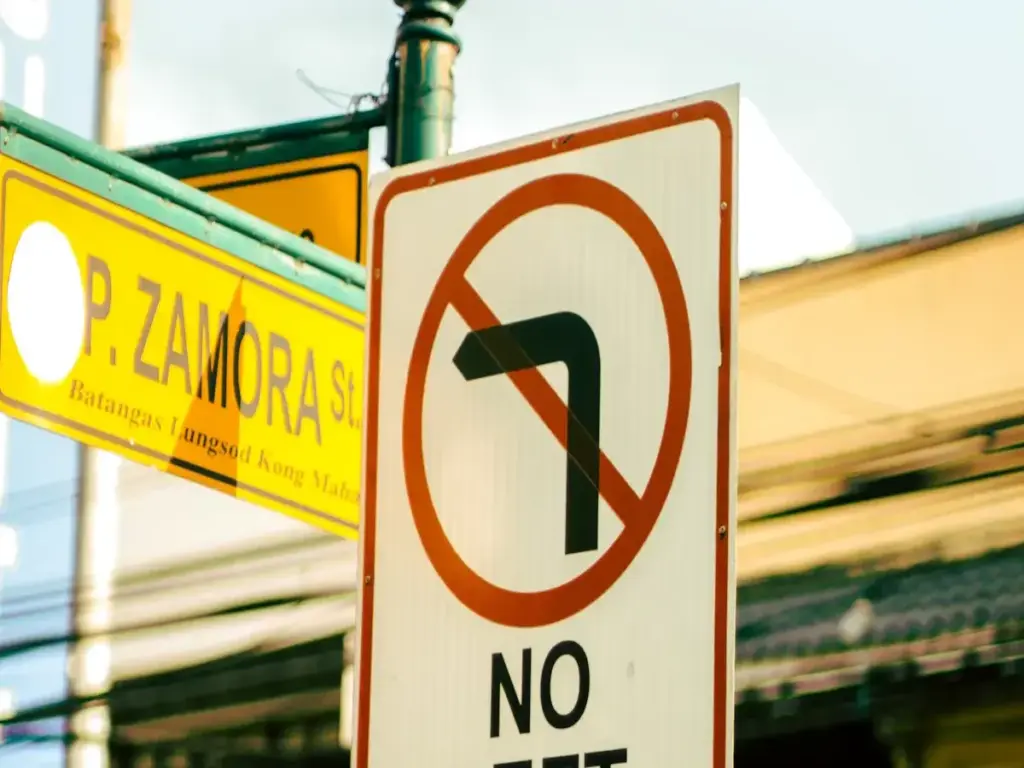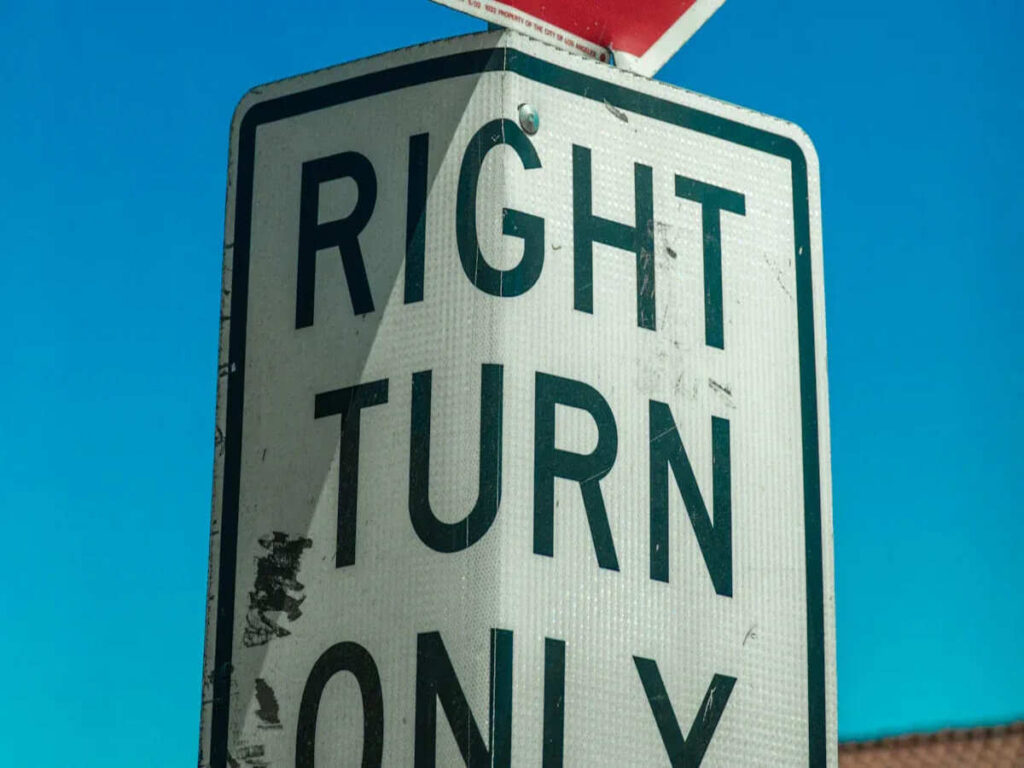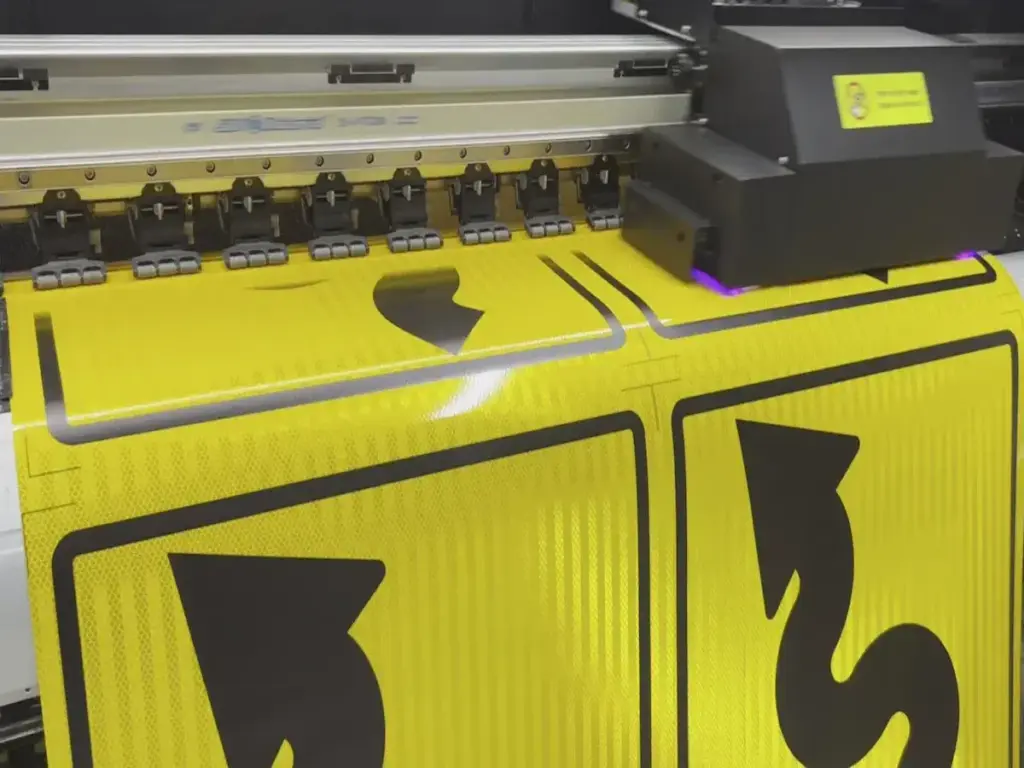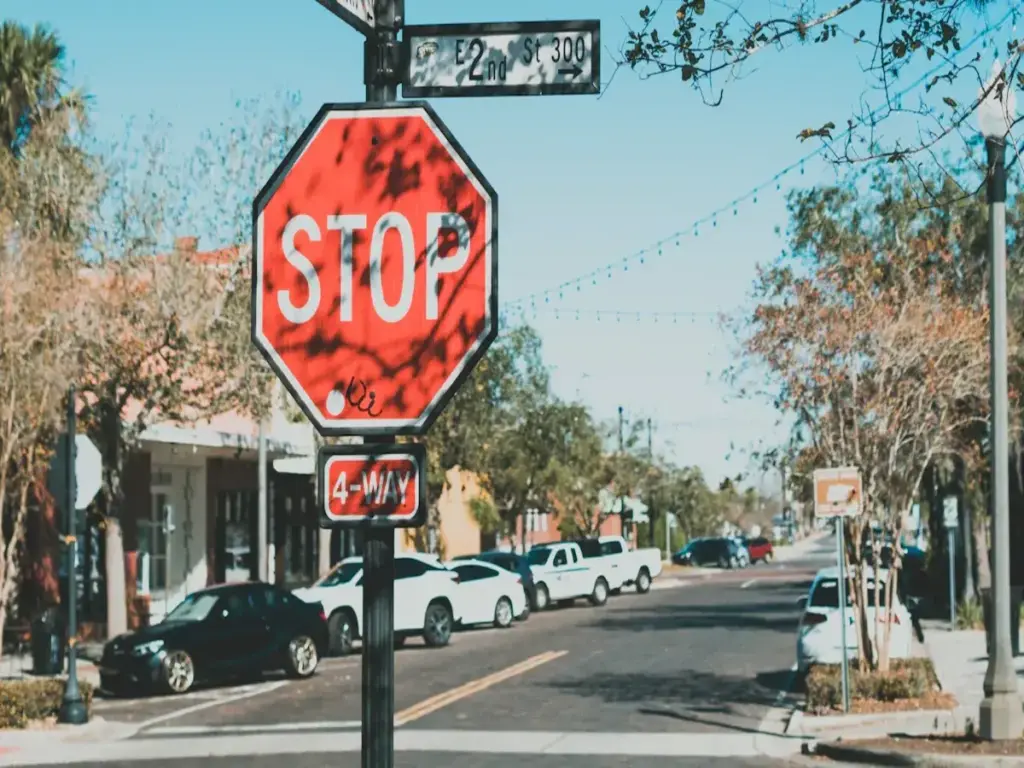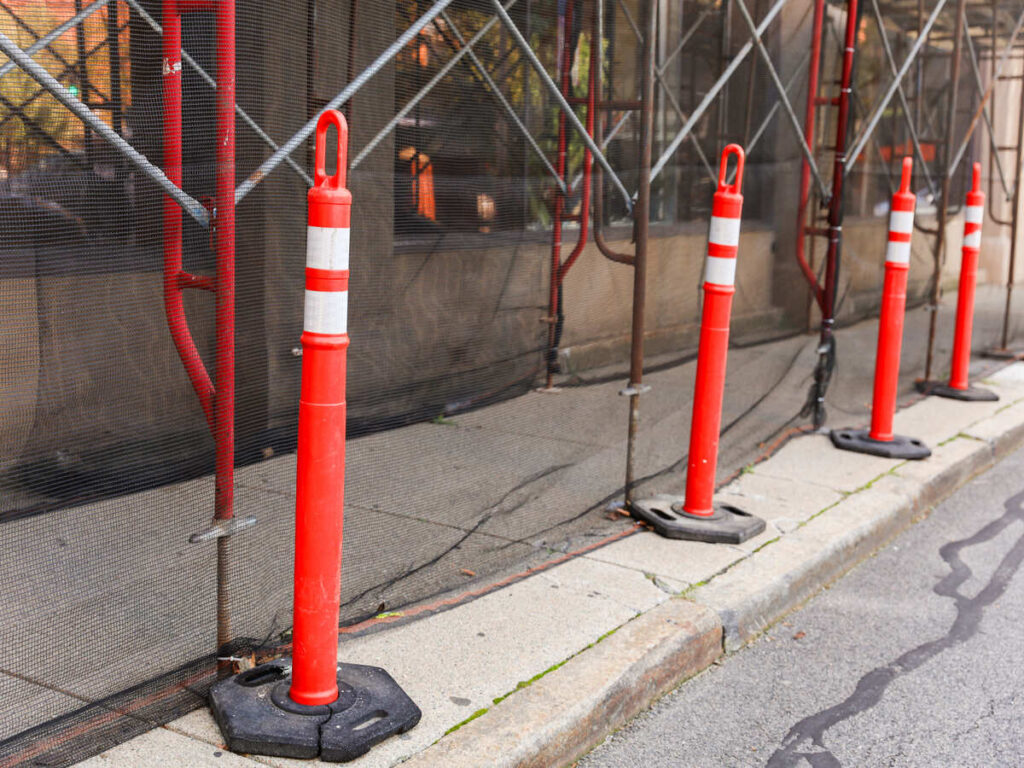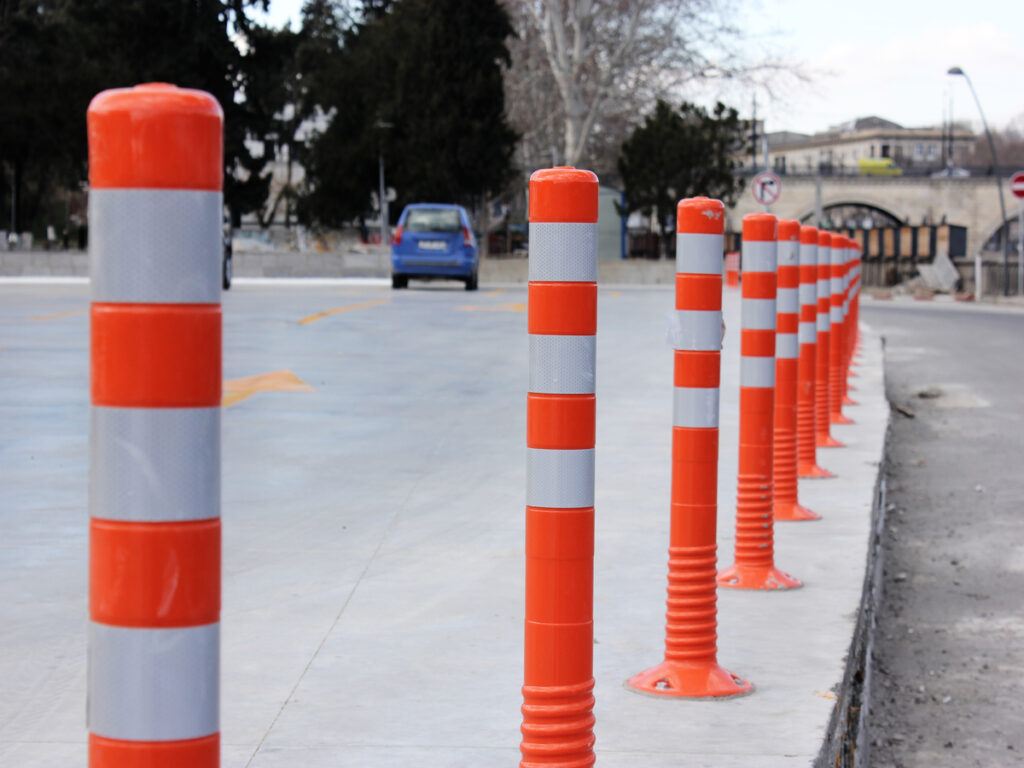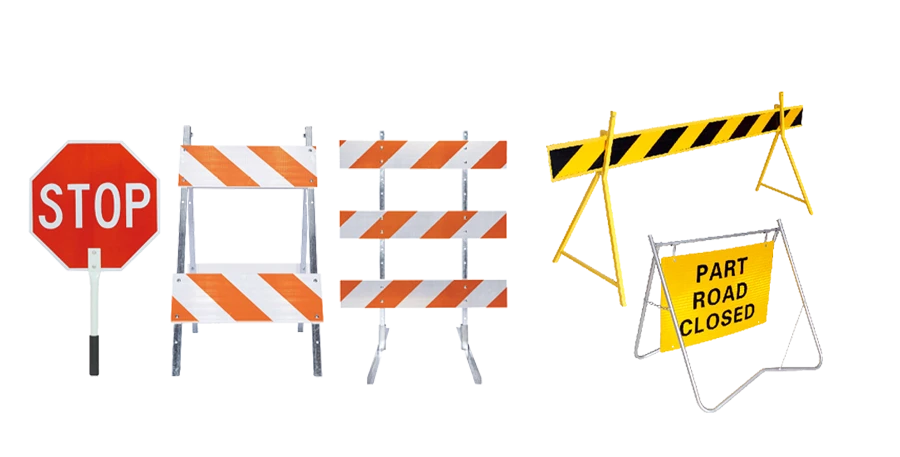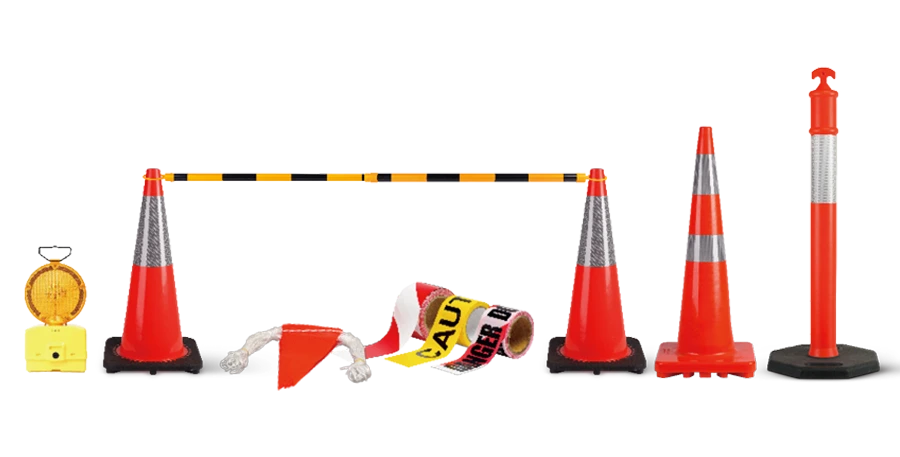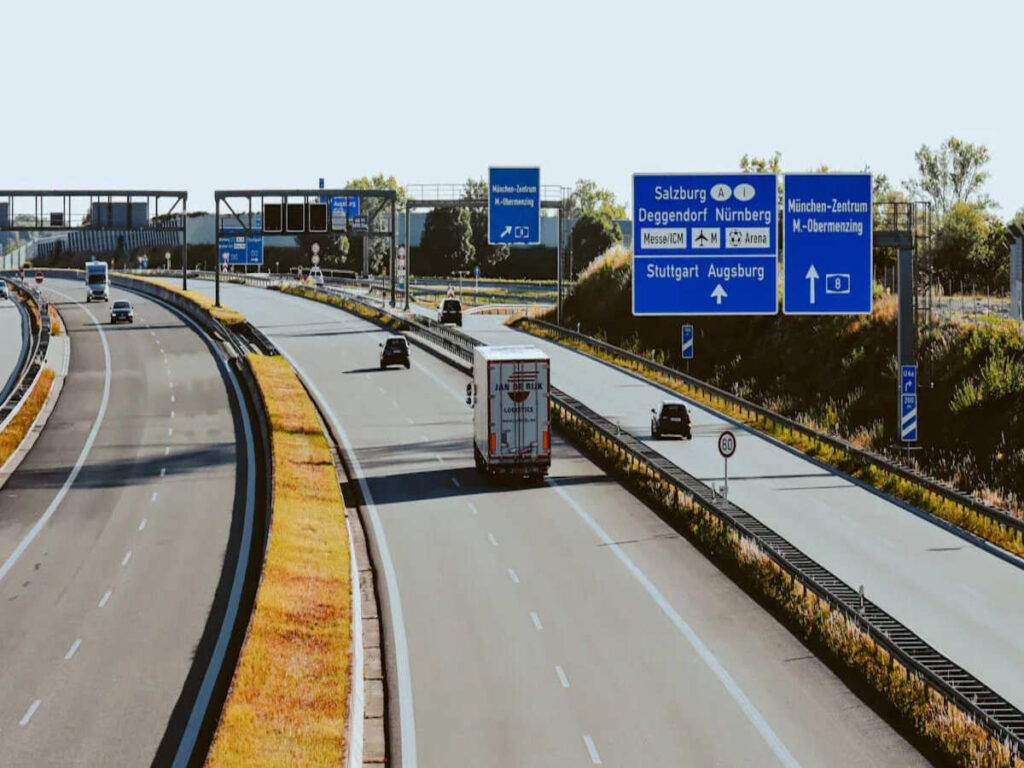
Sinais de trânsito padronizados ajudam os motoristas a se manterem seguros. Eles também ajudam as pessoas a seguir as regras. Essas placas orientam os motoristas e diminuem riscos de acidentes. Os sinais de trânsito na Alemanha e nos Estados Unidos usam símbolos e palavras claras. No entanto, seus projetos e regulamentos não são os mesmos. Isso pode mudar a forma como os motoristas percebem as estradas. Convenções internacionais, como a Convenção de Viena, ajuda no uso de símbolos. Os símbolos tornam os sinais mais fáceis de entender. Os resultados de segurança estão refletidos nos números:
| Métrica | Alemanha | Estados Unidos |
|---|---|---|
| Mortes nas estradas (2010) | 3,648 | 32,885 |
| Uso do cinto de segurança (motoristas) | 98% | 84% |
| Uso do cinto de segurança (passageiros) | 97% | 74% |
| Mortes por 100,000 (2010) | 4.5 | 10.6 |
| Motoristas licenciados (% da população) | 77.5% | 70% |
Como fornecedor global de sinalização, OPTRÁFEGO está comprometido em fornecer alta qualidade, sinais de trânsito padronizados que atendem às convenções internacionais e regulamentos locais. Nosso extenso gama de sinais de trânsito, projetado para segurança e eficiência, ajuda as cidades e as autoridades rodoviárias a cumprir as normas de segurança necessárias e a melhorar a segurança rodoviária. Com experiência em atender diversas regiões, OPTRÁFEGO é o seu parceiro de confiança para soluções personalizadas de sinalização de trânsito que suportam um fluxo de tráfego suave e seguro em todo o mundo
Takeaways -chave
- Os sinais de trânsito na Alemanha e nos EUA parecem diferentes. As regras não são as mesmas. Isso muda a forma como os motoristas sabem o que os sinais significam.
- A Alemanha tem regras muito rígidas para sinalização rodoviária. Essas regras ajudam a manter as pessoas seguras. Os EUA permitem que cada estado estabeleça suas próprias regras. Isso faz com que os sinais sejam diferentes em cada estado.
- Alemanha usa mais símbolos em cartazes. Isso ajuda os motoristas de outros países a entenderem os sinais rapidamente.
- Os limites de velocidade são mostrados de diferentes maneiras. Alemanha usa quilômetros por hora. Os EUA usam milhas por hora. Isso pode deixar os viajantes confusos.
- É importante aprender os sinais de trânsito antes de dirigir em um novo país. Isso ajuda você a se manter seguro e seguir as regras.
Regulamentos de sinais de trânsito: Comparando a Alemanha e os EUA
Padrões e conformidade de sinalização rodoviária alemã
A Alemanha tem regras muito rígidas para sinalização rodoviária. Estas regras ajudam a manter as estradas seguras e simples de usar. O país segue o StVO, que controla todos os sinais de trânsito. Essas regras são como o Regras da Convenção de Viena. Este acordo ajuda a fazer com que os sinais pareçam iguais na Europa. Devido a esta, os sinais não mudam muito entre as regiões alemãs. Os motoristas veem os mesmos sinais e regras em todos os lugares.
As regras alemãs concentram-se na segurança e na sinalização clara. Todos no carro devem usar cinto de segurança. A polícia verifica esta regra com frequência. Quase todas as pessoas o seguem. Todo carro deve ter coletes de segurança refletivos. Se um carro quebrar, todo mundo usa colete para ser visto. As regras de estacionamento usam um disco de estacionamento, que mostra quando você chegou. Faixas de emergência devem permanecer abertas durante engarrafamentos. Estas regras mostram que a Alemanha se preocupa com a segurança e a ordem.
Observação: A Alemanha usa a regra da direita antes da esquerda nos cruzamentos. A Autobahn também tem regras rígidas. Estes mostram que a Alemanha quer leis de trânsito claras e justas.
Padrões de sinalização rodoviária dos EUA: MUTCD vs.. Regulamentos Alemães
Os Estados Unidos usam o MUTCD para regras de sinalização rodoviária. Cada estado pode adicionar suas próprias regras. Mas todos os estados devem seguir o MUTCD. Isso significa que algumas regras mudam entre estados. Os motoristas podem ver sinais ou regras diferentes em cada estado.
- O MUTCD dá regras para todo o país, mas os estados podem mudá-los.
- As regras do cinto de segurança não são as mesmas em todos os estados. Nem todo mundo usa cinto de segurança.
- Não existe nenhuma regra nacional para coletes refletivos ou faixas de emergência.
- As regras de estacionamento são diferentes, e a maioria dos lugares não usa Parkscheibe.
A tabela abaixo mostra algumas diferenças principais:
| Aspecto | Alemanha | NÓS |
|---|---|---|
| Regra de direito de passagem | Regra da direita antes da esquerda se não houver sinais ou luzes. | Geralmente, o carro da direita vai primeiro nos cruzamentos. |
| Rotatórias | Os carros no círculo vão primeiro; direita antes da esquerda se não houver sinais. | Ceder aos carros que já estão na rotunda. |
| Regulamentos da Autobahn | Deve dirigir pela direita; passar pela direita não é permitido. | Dirija pela direita; passar pela esquerda é normal. |
| Pista de Emergência | Motoristas devem manter faixa de emergência aberta em engarrafamentos. | Nenhuma regra nacional; depende do estado. |
| Limites de velocidade | 50 km/h nas cidades, 100 km/h fora, 130 km/h sugerido na Autobahn. | Mudanças por estado; geralmente 25-35 mph nas cidades, 55-75 mph em rodovias. |
| Regulamentos de estacionamento | Use um Parkscheibe em alguns lugares para mostrar a hora de chegada. | Mudanças por estado; geralmente nenhum dispositivo especial é necessário. |
| Equipamento de segurança | Todos os passageiros precisam de coletes refletivos se o carro quebrar. | Nenhuma regra para coletes refletivos. |
Essas regras são diferentes por causa da história. A Alemanha segue as regras da UE para manter as coisas iguais. Os EUA permitem que cada estado estabeleça algumas de suas próprias regras. Isso pode tornar as coisas confusas para os motoristas que viajam para novos lugares.
Design Visual de Sinais de Trânsito: Principais diferenças
Formas de sinais de trânsito e esquemas de cores na Alemanha e nos EUA
Os sinais de trânsito parecem diferentes na Alemanha e nos EUA. O formas e cores não são iguais. Essas diferenças ajudam os motoristas a saber o que fazer rapidamente. Alemanha usa regras da Convenção de Viena. Os EUA seguem o mutcd, que tem suas próprias regras.
A tabela abaixo mostra como cada país usa formas e cores para sinalização:
| Tipo de sinal | Forma | Esquema de cores | Significado |
|---|---|---|---|
| Aviso | Triângulo Vermelho | Vermelho (para avisos) | Alertas sobre um perigo na estrada ou perto dela |
| Proibição | Redondo | Anel Vermelho | Indica uma restrição ou proibição |
| Exigência | Redondo | Disco Azul | Indica uma ação obrigatória ou limite mínimo |
| Regulamento Especial | Quadrado | Quadrado Azul | Indica regulamentos especiais ou múltiplos |
| Serviços | Quadrado | Azul com quadrado branco interno | Usado para serviços de motorista |
| Direcional | Retangular | Amarelo (não rodoviário) | Usado para rotas em estradas que não sejam Autobahn |
| Direção da Autobahn | Retangular | Azul (para Autobahn) | Used for directions to or on Autobahns |
| Supplemental | White Rectangle | Branco | Provides additional information or context |
Na Alemanha, warning signs are red triangles. Nos EUA, warning signs are yellow diamonds. Stop signs in the US are red and have eight sides. Na Alemanha, stop signs are round and red. These differences help drivers know what kind of sign they see. Colors also tell drivers if a sign is a warning, a rule, or just information. The way signs look shows how each country thinks about safety and sharing information.
Símbolos vs.. Texto: Which Is More Effective in Road Signs?
Symbols and words are both used on road signs. Germany uses symbols more than words. The US uses both symbols and short words. This changes how fast drivers can understand signs.
- Symbols help people from other countries understand signs.
- Words give more details, mas podem atrasar as pessoas se não conhecerem a língua.
- Estudos mostram que símbolos claros ajudam os condutores a agir mais rapidamente e a fazer escolhas mais seguras.
Países europeus, como a Alemanha, use símbolos para ajudar todos a entender. Os EUA usam símbolos e palavras para deixar as coisas claras. Estas escolhas mostram como cada país pretende manter os condutores seguros e ajudá-los a seguir as regras. Os símbolos são bons para escolhas rápidas. Palavras podem ajudar a explicar ideias mais difíceis.
Dica: Se você dirige na Alemanha e nos EUA, aprenda as principais diferenças de sinais. Isso ajudará você a ficar seguro e não ficar confuso.
Sinais regulatórios: Uma comparação de limites de velocidade, STOP SIGNS, e regras de prioridade
Diferenças nos sinais de limite de velocidade entre a Alemanha e os EUA
Sinais de limite de velocidade na Alemanha e nos EUA mostram diferenças claras. Alemanha usa quilômetros por hora (km/h) em seus sinais. Os EUA usam milhas por hora (km/h). Essas diferenças na sinalização regulatória podem confundir os motoristas que viajam entre os dois países.
- Na Alemanha, cidades têm limite de velocidade de 50 km/h. Mostra de estradas rurais 100 km/h. A Autobahn tem velocidade sugerida de 130 km/h, mas algumas seções não têm limite de postagem.
- Nos EUA, limites de velocidade mudam por estado. Algumas rodovias no Texas permitem até 80 km/h (sobre 129 km/h). A maioria das estradas tem limites para todos os veículos.
- As regras rigorosas e os sinais claros da Alemanha ajudam os condutores a saber o que esperar. Os EUA usam mais regras locais, então os motoristas devem estar atentos às mudanças.
- Relatórios de segurança rodoviária mostram diferenças nos resultados. A Alemanha tinha 3,648 mortes nas estradas em 2010. Os EUA tiveram 32,885 no mesmo ano.
Essas diferenças afetam a velocidade com que as pessoas dirigem e a sensação de segurança nas estradas.
Sinais de parada e rendimento: Uma análise comparativa
Parar e os sinais de rendimento parecem diferentes na Alemanha e nos EUA.
- A Alemanha usa um sinal vermelho redondo com a palavra “STOP”. Os EUA usam um sinal vermelho octogonal com “STOP” em letras brancas.
- Os sinais de rendimento na Alemanha são triangulares com uma borda vermelha e as palavras “Vorfahrt gewähren”. Os EUA usam um triângulo com uma borda vermelha e a palavra “YIELD”.
- Estas diferenças nos sinais regulamentares ajudam os condutores a reconhecer as regras rapidamente.
- A forma e a cor facilitam a identificação do sinal, Mesmo de longe.
Sinais de prioridade: Como a Alemanha e os EUA diferem
Regras de prioridade mostram mais diferenças.
- Alemanha usa um diamante amarelo para mostrar estradas prioritárias. Os motoristas sabem que não precisam ceder.
- Os EUA não usam um diamante como prioridade. Em vez de, sinais e marcações rodoviárias mostram quem vai primeiro.
- Nos cruzamentos, A Alemanha costuma usar a regra da direita antes da esquerda. Os EUA geralmente deixam o carro da direita ir primeiro, mas as regras locais podem mudar isso.
- Essas diferenças ajudam os motoristas a entender quem tem prioridade.Dica: Os motoristas devem aprender as regras locais antes de dirigir em um novo país. Isso ajuda a evitar erros e mantém todos seguros.
Sinais de trânsito de alerta e informação: Recursos comuns e exclusivos
Sinais de alerta comuns na Alemanha e nos EUA
Motoristas na Alemanha e nos EUA veem muitos sinais de alerta. Esses sinais ajudam as pessoas a ficarem atentas ao perigo. Ambos os países usam formas e cores para facilitar a visualização dos sinais. Na Alemanha, sinais de alerta são triângulos vermelhos com um símbolo dentro. Os EUA usam diamantes amarelos com símbolos ou palavras pretas. Essas diferenças ajudam os motoristas a saber o que esperar.
Alguns sinais de alerta parecem iguais, como curvas fechadas ou cruzamentos de animais. Ambos os países usam imagens para mostrar esses perigos. O Os EUA às vezes adicionam palavras como “Zona escolar” ou “Cruzamento de cervos.” Alemanha usa mais símbolos, que ajuda pessoas que não falam alemão. Essas diferenças facilitam a compreensão dos sinais pelos visitantes.
Sinais direcionais e informativos: Principais diferenças
Sinais direcionais e informativos ajudam os motoristas a encontrar o caminho. A Alemanha e os EUA usam cores e formatos diferentes para esses sinais. A tabela abaixo mostra como os sinais de guia são diferentes:
| Recurso | Alemanha | NÓS |
|---|---|---|
| Uso de cores | Círculo branco com borda vermelha para ações proibitivas; círculo azul para ações obrigatórias; verde para rodovias estaduais; azul para serviços; marrom para atrações turísticas. | Vermelho com branco para stop/yield; verde com branco para informação; marrom para parques; azul para serviços; branco com preto para regulamentação; amarelo para avisos; laranja para construção. |
| Forma | Retangular para sinalização de informação e direção. | Retangular para sinalização informativa, com formatos específicos para sinalização regulatória. |
| Práticas Regulatórias | Segue os padrões europeus para design de sinalização. | Padronizado, mas com exceções, especialmente fora dos EUA. |
Alemanha usa imagens e setas para mostrar direções. Os EUA usam mais palavras, como “Saída” ou “Área de descanso.” Estas diferenças podem alterar a rapidez com que os condutores encontram o seu caminho. Os sinais da Alemanha usam símbolos, mas os EUA usam palavras e cores. Isto mostra como cada país tenta deixar os sinais claros.
Sinais de trânsito exclusivos na Alemanha vs.. os EUA
Alguns sinais de trânsito são encontrados apenas em um país. Alemanha tem sinalização especial para carros autônomos. Esses sinais ajudam esses carros a saber onde estão na estrada. Os EUA ainda não usam esses sinais. Outras diferenças incluem:
- Alemanha usa sinalização de zona ambiental para áreas com regras de poluição.
- Os EUA têm sinais de estado, como “Parada na Califórnia,” que não estão na Alemanha.
- Alemanha tem sinalização para limites de velocidade em autoestradas e locais sem limite de velocidade.
Essas diferenças ajudam os motoristas a aprender as regras locais e as novas tecnologias. As pessoas deveriam aprender sobre sinais especiais antes de dirigir em um novo país.
Sinais Rodoviários Regionais e Especializados
Sinais de autoestrada na Alemanha: Compreendendo seu papel
Autobahn da Alemanha tem sinalização especial para motoristas. Esses sinais usam cores brilhantes e símbolos fáceis. Sinais retangulares azuis mostram saídas e direções. Números brancos em sinais azuis mostram velocidades sugeridas. Alguns sinais mostram a velocidade mais lenta permitida. Outras placas mostram locais sem limite de velocidade. Os sinais de alerta são triângulos com bordas vermelhas. Eles alertam sobre curvas fechadas ou obras na estrada.
A tabela abaixo mostra os principais tipos de sinais de trânsito especiais na Alemanha:
| Tipo de sinal | Características físicas | Descrição/Exemplos |
|---|---|---|
| Sinais de aviso | Triangular com borda externa vermelha | Travessias ferroviárias, áreas restritas |
| Sinais dando ordens | Muitas vezes sinais redondos azuis | Rotas permitidas, uso da estrada para determinados usuários |
| Sinais informativos | Quadrado ou retangular | Estradas prioritárias, zonas de estacionamento e passeio |
| Dispositivos de controle de tráfego | Listrado vermelho e branco, às vezes luzes | Perigos temporários, construção |
Placas da Autobahn ajudam os motoristas a conhecer regras de velocidade e faixas. Sinais da Autobahn alemã usam quilômetros por hora. Eles também mostram velocidades sugeridas. Muitas peças da Autobahn não têm velocidade máxima. A Alemanha sugere dirigir em 130 km/h. Esses sinais ajudam os carros a se moverem com segurança e rapidez.
Sinais de trânsito específicos do estado nos EUA: Variações Locais
Os EUA têm regras nacionais para sinais de trânsito. Mas cada estado pode fazer seus próprios sinais. Estados adicionam cores, formas, ou fotos para mostrar o orgulho local. Colorado coloca sua bandeira em cartazes. Alasca e Novo México usam peças de bandeira. Pensilvânia usa seu apelido, o estado-chave. Arizona e Nevada usam seu formato de estado em placas.
| Estado | Recursos de sinalização |
|---|---|
| Colorado | Gráficos da bandeira do estado |
| Alasca | Elementos de bandeira individuais |
| Novo México | Elementos da bandeira do estado |
| Pensilvânia | Referência do Estado Keystone |
| Washington | Silhueta de George Washington |
| Arizona | Esboço do estado |
| Nevada | Esboço do estado |
| Nova Jersey | Formas geométricas simples |
| Kentucky | Formas geométricas simples |
| Mississipi | Formas geométricas simples |
| Iowa | Formas geométricas simples |
| Delaware | Formas geométricas simples |
- Cada estado tem suas próprias rodovias e regras.
- Algumas rodovias seguem padrões nacionais, mas alguns não.
- O clima e o formato do terreno mudam a aparência dos sinais.
Essas mudanças podem confundir os motoristas que visitam novos estados. Sinais e símbolos diferentes podem dificultar a viagem. Estados mudam sinais para suas próprias necessidades. Isso pode tornar a condução menos tranquila para os visitantes.
Dica: Os motoristas devem observar atentamente as placas nos novos estados. Formas ou imagens especiais podem mostrar regras locais importantes.
Conformidade e aplicação dos regulamentos de sinalização rodoviária
Penalidades por não conformidade com sinais de trânsito na Alemanha
Polícia alemã monitora motoristas de perto. Eles querem que todos sigam os sinais de trânsito. Se você quebrar uma regra, você recebe uma multa. Por exemplo, parar perto de uma passadeira ou semáforo custa 20€. A tabela abaixo mostra essa penalidade.
| Violação | Pena |
|---|---|
| Parando em áreas proibidas (Por exemplo, perto de faixas de pedestres, semáforos) | 20€ |
Erros graves dão pontos aos motoristas. Esses pontos vão para um grande banco de dados. Se você receber muitos pontos, você perde sua licença. Este sistema ajuda as pessoas a obedecer às regras. Também mantém as estradas seguras e organizadas.
Aplicação dos regulamentos de sinalização rodoviária nos EUA: Local vs.. Diferenças Nacionais
Os EUA têm regras nacionais para sinais de trânsito. Estas regras vêm do MUTCD. Os governos locais podem mudar algumas regras. Eles pensam sobre o clima e as condições da estrada. A lista abaixo explica como as regras funcionam nos EUA:
- O MUTCD estabelece regras para todo o país.
- Os governos locais mudam as regras para sua área, como para o clima.
- Cidades e estados podem ajustar as regras de sinalização, mas devem seguir os padrões nacionais.
A Alemanha mantém as mesmas regras em todos os lugares. Os EUA permitem que cidades e estados mudem algumas regras. Isso significa que os motoristas podem ver sinais diferentes em novos lugares. O controle local ajuda com necessidades especiais, mas as regras nacionais mantêm as coisas semelhantes. Os motoristas devem aprender as regras locais para evitar multas e permanecer seguros.
O impacto das diferenças nos sinais de trânsito nos motoristas
Desafios enfrentados por motoristas internacionais com diferentes sinais de trânsito
Motoristas internacionais podem ficar confusos com novos sinais de trânsito. Eles podem não saber o que significam diferentes formas e símbolos. A Alemanha usa os mesmos sinais em todos os lugares por causa das regras da UE. Os EUA permitem que cada estado faça seus próprios sinais. Isso torna difícil para os visitantes entenderem as regras.
| Aspecto | Alemanha | NÓS |
|---|---|---|
| Padronização | Sinais normalizados em toda a UE | Variações específicas do estado |
| Clareza | Alta clareza devido à uniformidade | Possível confusão devido a inconsistências |
| Contexto Cultural | Regulamentos consistentes de segurança rodoviária | Varia por estado, afetando a compreensão |
Os motoristas na Alemanha devem aprender muitos símbolos e regras de segurança. Obter uma licença na Alemanha leva mais tempo e prática do que nos EUA. Visitantes que não conhecem as regras podem cometer erros. Nos EUA, os motoristas devem ficar atentos às novas placas em cada estado. Desconhecer a sinalização pode causar multas ou acidentes.
- Não entender os sinais pode levar a multas.
- Algumas placas alertam sobre perigos na área.
- Não conhecer os costumes locais pode tornar a condução insegura.
Como as diferenças nos sinais de trânsito afetam a segurança e a navegação dos motoristas
Diferentes sinais de trânsito na Alemanha e nos EUA mudam a segurança da condução. A Alemanha usa os mesmos sinais de velocidade em todos os lugares. Isso ajuda os motoristas a saber a velocidade certa. Os EUA têm sinais de velocidade diferentes em cada estado. Isso pode confundir pessoas que não são de lá. A Alemanha tem uma regra estrita de álcool no sangue de 0.03% para motoristas com problemas. Os EUA permitem até 0.08%, que é menos rigoroso.
| Aspecto | Alemanha | Estados Unidos |
|---|---|---|
| Sinalização de limite de velocidade | Diferentes convenções de sinalização de limite de velocidade | Varia por estado, muitas vezes menos padronizado |
| Atitudes culturais | Forte ênfase na segurança rodoviária | Varia, com algumas regiões menos rigorosas |
| Processo de carteira de motorista | Treinamento extensivo e custos elevados | Processo mais simples com menos requisitos |
Motoristas na Alemanha e nos EUA notam diferentes formas e cores nos sinais de trânsito. Os símbolos nesses sinais nem sempre são os mesmos. Ambos os países usam sinais para ajudar a manter as pessoas seguras. Mas as regras e a aparência dos sinais são diferentes. As pessoas devem aprender sobre os sinais locais antes de dirigir. Conhecendo os sinais de parada, semáforos, e avisos ajudam a impedir acidentes.
No OPTRÁFEGO, entendemos a importância da padronização, claro, e sinalização rodoviária eficaz para a segurança rodoviária local e internacional. Como parceiro de confiança para empresas de gestão de tráfego e departamentos governamentais, oferecemos uma ampla gama de sinais de trânsito de alta qualidade que atendem às regulamentações locais e globais. Esteja você gerenciando uma rede rodoviária ou supervisionando a segurança pública, OPTRAFFIC fornece soluções personalizáveis projetado para atender às necessidades específicas de sua jurisdição.
Perguntas frequentes
O que é a Convenção de Viena sobre Sinais e Sinais Rodoviários?
A Convenção de Viena sobre Sinais e Sinais Rodoviários é um tratado internacional adotado em 1968 para padronizar sinais e sinais de trânsito em todos os países. O objetivo da Convenção é melhorar a segurança rodoviária e facilitar o tráfego rodoviário internacional, estabelecendo um entendimento comum dos sinais de trânsito., sinais, e marcações rodoviárias. O tratado fornece diretrizes sobre o design, forma, cor, e símbolos usados na sinalização rodoviária, visando a consistência além-fronteiras para garantir uma comunicação mais clara com os utentes da estrada, independentemente da sua língua nativa.
O que é StVO na Alemanha?
O StVO (Regulamentos de trânsito rodoviário) é o Regulamento de Trânsito Rodoviário Alemão, que regem as regras e regulamentos de trânsito na Alemanha. É uma parte fundamental da lei de trânsito do país, que estabelece as regras para os utentes da estrada, incluindo motoristas, ciclistas, e pedestres. O StVO cobre uma ampla gama de tópicos, como limites de velocidade, Sinais de trânsito, comportamento em cruzamentos, Regulamentos de estacionamento, e medidas de segurança. Tem como objetivo garantir a segurança, ordem, e fluxo de tráfego suave nas estradas da Alemanha.
Como são mostrados os limites de velocidade na Alemanha e nos EUA?
Alemanha usa sinais circulares brancos com números pretos. Esses números mostram a velocidade em quilômetros por hora. Os EUA usam sinais retangulares com números pretos. Esses números mostram a velocidade em milhas por hora. Os motoristas precisam perceber essas diferenças quando viajam.
O que há de diferente nos sinais de stop na Alemanha e nos EUA?
A Alemanha tem sinais de stop vermelhos redondos com “PARAR” escrito neles. Os EUA têm sinais vermelhos em forma de octógono. Eles também têm “PARAR” em letras brancas. A cor e o formato ajudam os motoristas a ver a placa rapidamente.
Existem sinais de trânsito especiais na Alemanha que não são encontrados nos EUA??
A Alemanha tem sinalização para zonas ambientais e áreas sem limite de velocidade na Autobahn. Os EUA não usam esses sinais. Os motoristas na Alemanha devem aprender estes sinais antes de dirigir.
Como a Alemanha e os EUA criam regras para sinais de trânsito?
A Alemanha utiliza regras nacionais rigorosas das normas europeias. Os EUA seguem as regras do MUTCD para todo o país. Mas cada estado pode mudar algumas regras. Isso significa que os EUA têm mais diferenças nos sinais.
Como os sinais de alerta para zonas escolares diferem na Alemanha e nos EUA?
A Alemanha usa sinais de triângulo vermelho com símbolos para zonas escolares. Os EUA usam sinais de diamante amarelo com palavras ou luzes piscantes. Ambos os países querem manter as crianças seguras perto das escolas.
